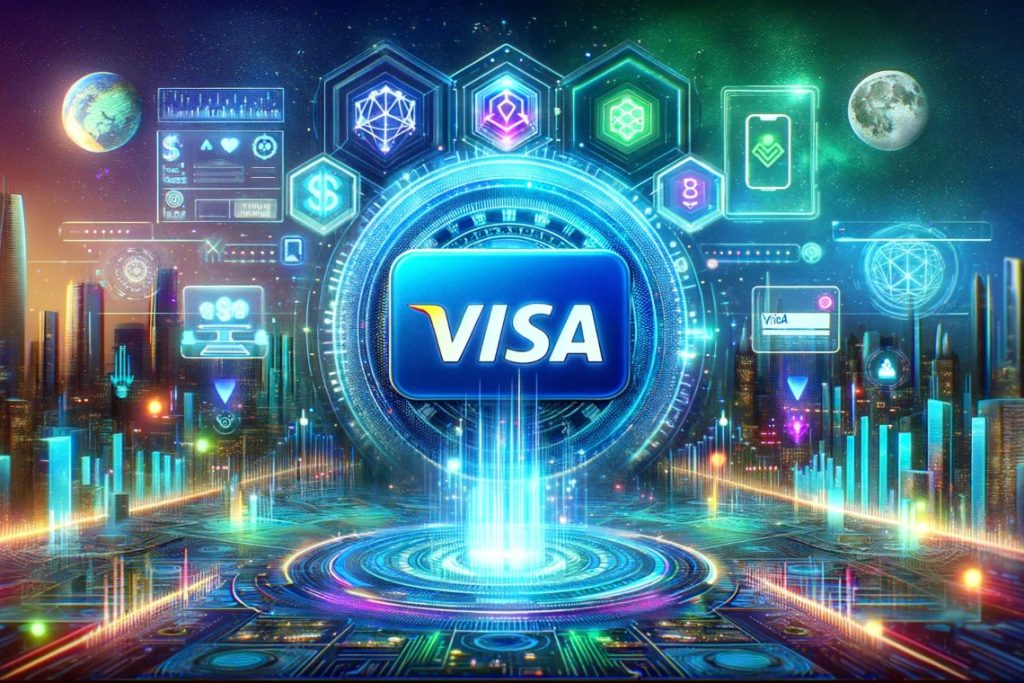Understanding Brand Loyalty in 2024
(Or, VISA has figured it out…)
Written by Laurence Lewandowska and Sarah Kornfeld
The landscape of Brand Loyalty is undergoing a significant transformation driven by Web3 technology. Visa, at the forefront, announced its Web3 Loyalty Program, leveraging decentralized architecture and blockchain capabilities to reshape brand connections.
January 4, 2024, Visa emphasized the need for new, engaging loyalty solutions. Kathleen Pierce-Gilmore, SVP and Global Head of Issuing Solutions highlighted the shift towards rewarding active customer engagement, paving the way for immersive digital and real-world experiences:
“Consumers are looking to engage with brands in new ways, and traditional loyalty programs have not evolved over the past decade. Imagine earning a unique digital collectible, whether it’s from purchasing tickets for a sports event or participating in an augmented reality treasure hunt. Our new innovative digital loyalty solution empowers brands to reward customers not only for their transactions but for their active engagement, paving the way for secure, seamless, and immersive digital and real-world experiences at their fingertips.” (Source)
While Visa focuses on engagement and experiences, it remains to be seen if they grasp the deeper demands for highly creative, meaning-based loyalty. This loyalty revolution signifies a shift from top-down to collaborative models within consumer communities, where shared values drive brand narratives.
“Visa is seeing the landscape clearly,” said Carolina Cappabianca, Co-Founder and Managing Director of Rising Partners with 25+ years working with multinationals, who drove Italy’s highly successful Sky loyalty project. “The rules defining the connection between brands and customers have fundamentally changed. Or, perhaps there are new aspects to consider in the dynamics of those relationships. Meaning is one of them, as well as participation and collaboration. Web3, with creativity at its core, can help connect generations in a more community-focused, highly creative style of brand loyalty.”

Carolina Eugenia Cappabianca, Founder of Rising Partners
Introducing loyalty tokens and decentralized platforms in Web3 allows customers to engage with brands beyond traditional transactions. They become co-creators, contributing to the development and evolution of products and services. This paradigm shift positions brands as sellers and entities that inspire, listen, and learn from their communities.
Because GenZ is rejecting a culture of glut (they believe that the endless desire for “abundance” has profoundly harmed the planet), they reject the idea that people are mere “consumers” and are using Web3 to build communities.
Communities are defined as Decentralized Autonomous Organizations (DAOs) or groups meeting on social platforms. Brands create communities where customers engage through programs, tokens, and connections—Visa exemplifies this with its loyalty platform.
The heart of this transformation lies in authenticity. They are redefining the essence of brand relationships, moving away from the perceived coerciveness of traditional loyalty programs. In the Web2 era, the emphasis was on brands pushing their offerings through various marketing channels. With Web3, we market to Communities.
Therefore, Web3 technology has enabled a social movement, creating an era where brands no longer dictate “from above” but collaborate within these communities. “Consumers” are not just loyal customers; they are active members of dynamic, purpose-driven collectives – now they are called “members” (not consumers). These communities are built on principles of transparency, shared ownership, and a commitment to positive change.
A New Age of Brand Loyalty: Embracing Authenticity
In the Web2 era, it was a “push” approach – brands pushing their offerings through ads, emails, and promotions, often resulting in skepticism and detachment.
“In the 1990-2000s, we pioneered brand loyalty using CRM tools and databases to capture names and needs, and we thought we’d created the best system to connect with customers and grow business. And we did, but now we must adapt to a new generation,” Cappabianca shared. “With this younger generation, our brand growth is not what they want us to promote. They want us to build programs for loyalty that reflect their values and, more crucially, how they value connection with other customers – to create communities of shared interests. They invented a Web3 culture that runs on the blockchain, and Brands need to understand how to play by these rules.”
Large brands can and should move quickly to understand the deeper implications of the Web3 movement as a change in culture and behavior. The urgency will benefit both the brand and the customer.
Changes in Loyalty Programs in Web3:
- The Creative Economy is critical, democratizing creativity and blurring lines between producers and consumers.
- As the new currency, loyalty tokens represent tangible ownership of digital assets.
- Leading brands embrace Web3 and the Creative Economy—e.g. Nike now issues NFT sneakers on its Web3 platform.
Emphasis on Storytelling Has Only Increased
Storytelling remains potent for brands in the creative economy. Web3’s focus on transparency and authenticity complements storytelling, using blockchain to record the brand’s journey and impact.
Gamification and Rewards Programs Is More Deeply Mechanized
Web3 enhances gamification and rewards programs, ensuring dynamic transparency. Loyalty tokens, built on blockchain, offer tangible ownership and value, allowing customers to participate in decision-making processes fairly.
Cappabianca envisions the future of loyalty, acknowledging the shift to community engagement. Understanding the enormous impact of customer authenticity and Web3 is crucial for the exciting future of loyalty programs.
“I predict that although regulation of Web3 remains a larger global process, we must accept that ‘consumer loyalty’ is shifting to ‘community engagement.’ The Web3 structures of transparency and NFT technology are re-wiring how we all engage. This trend of customer authenticity and the use of Web3 is enormous, and loyalty programs have an exciting future if you understand this seismic shift – and do something meaningful with it.”



